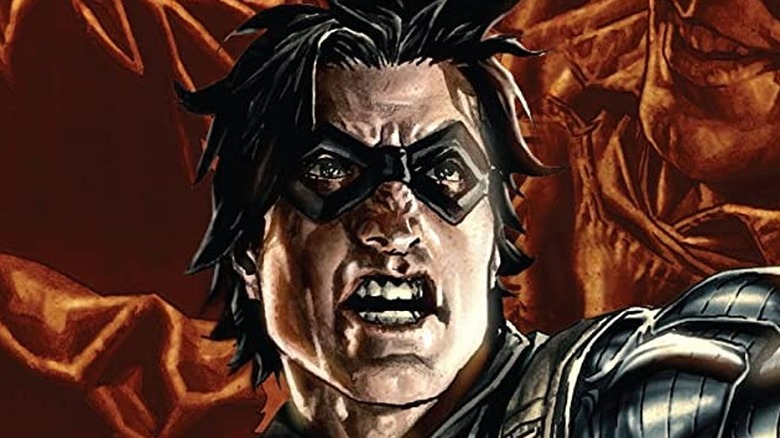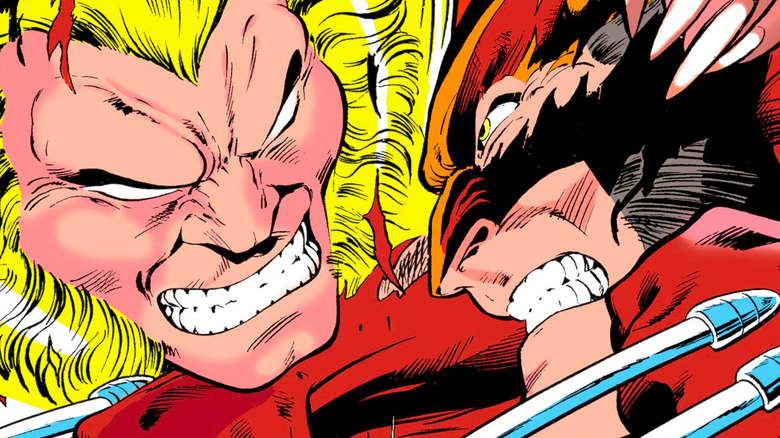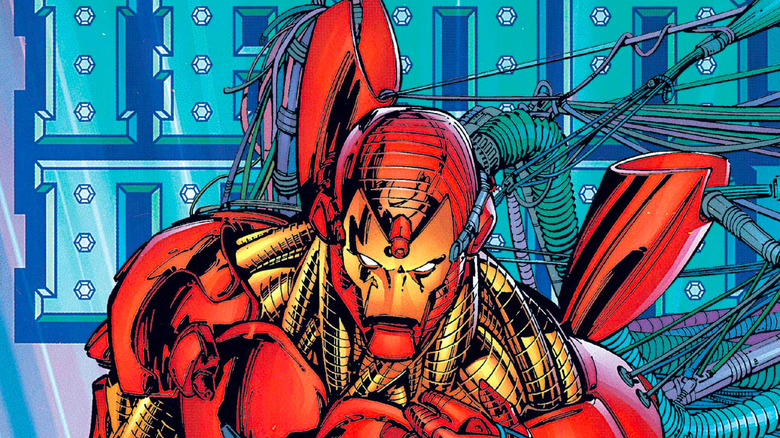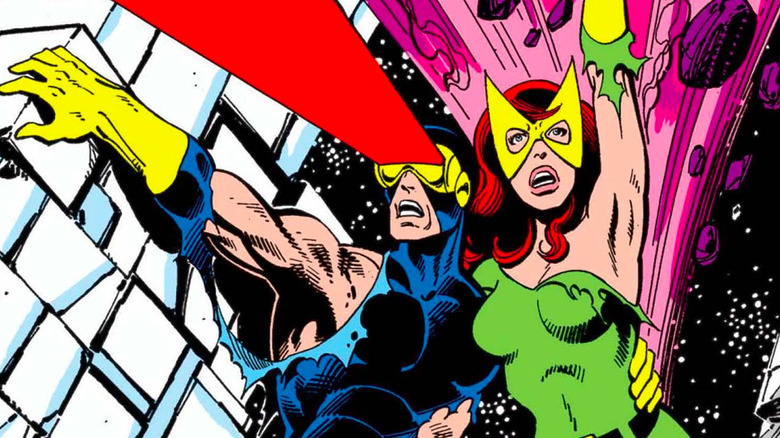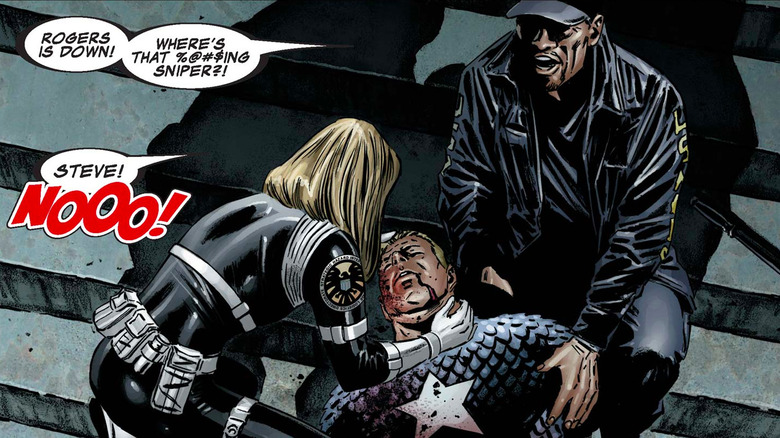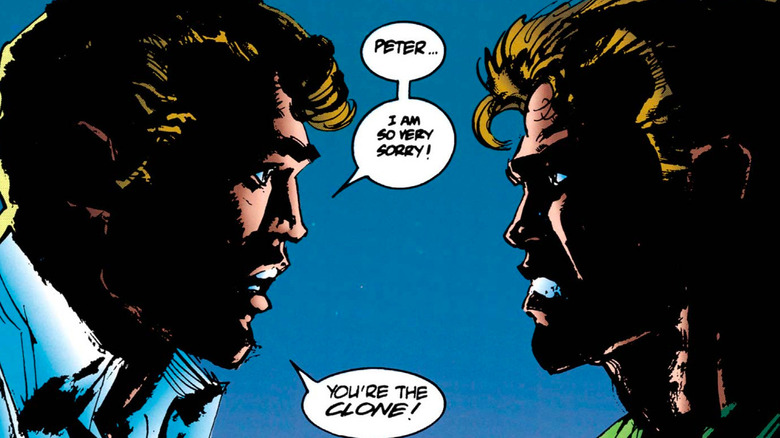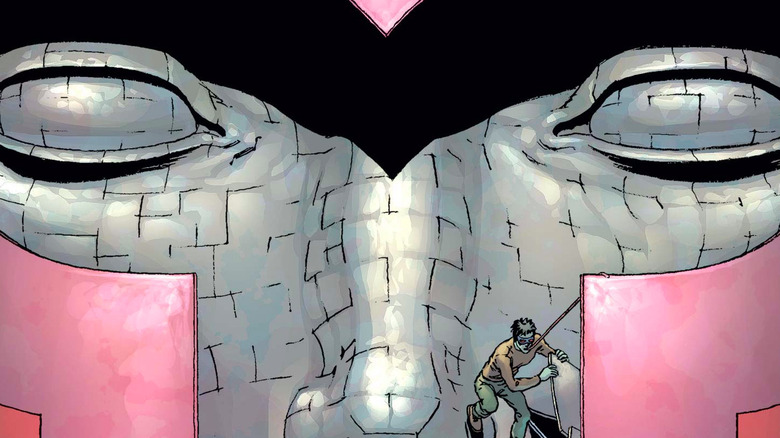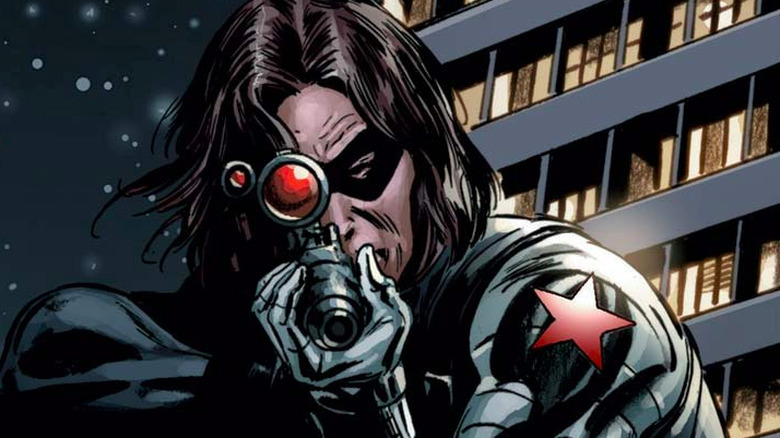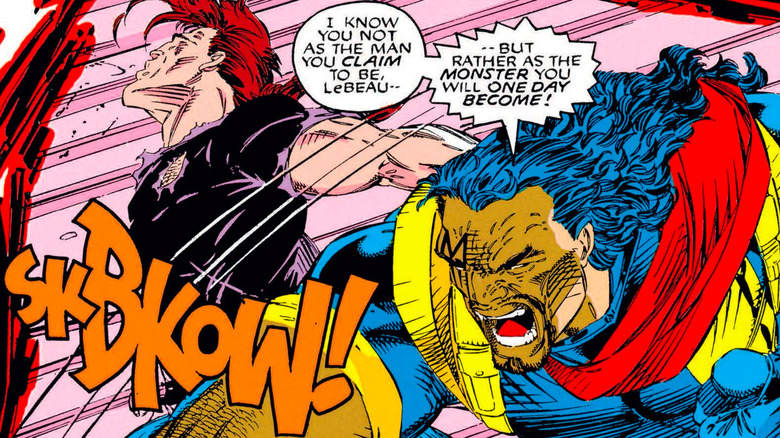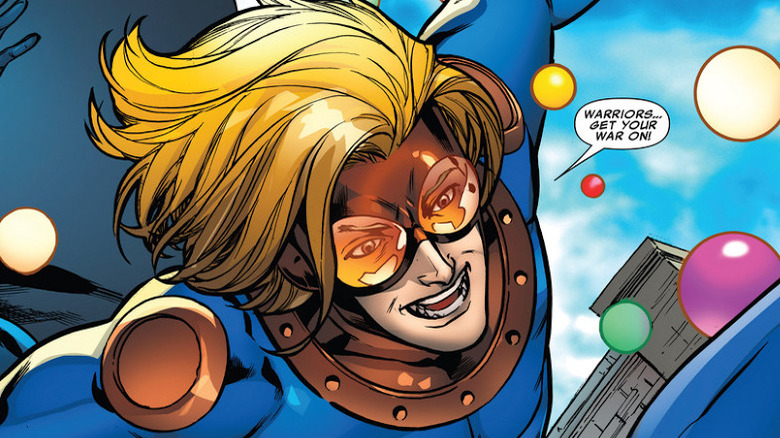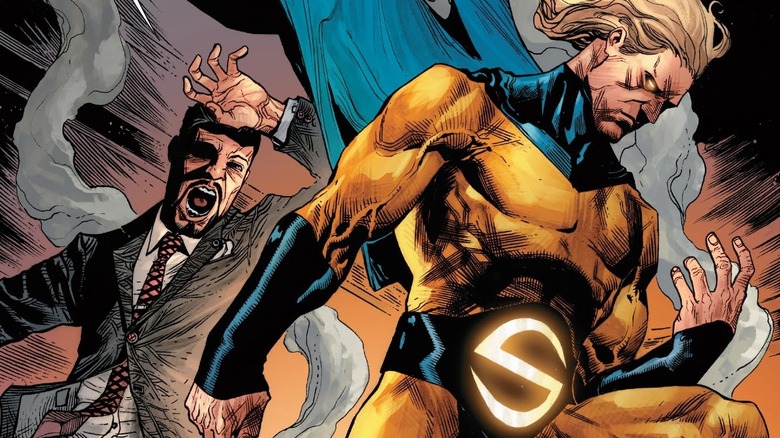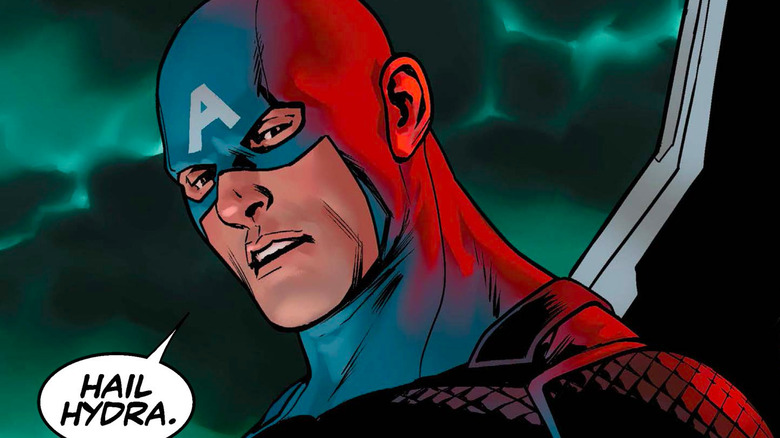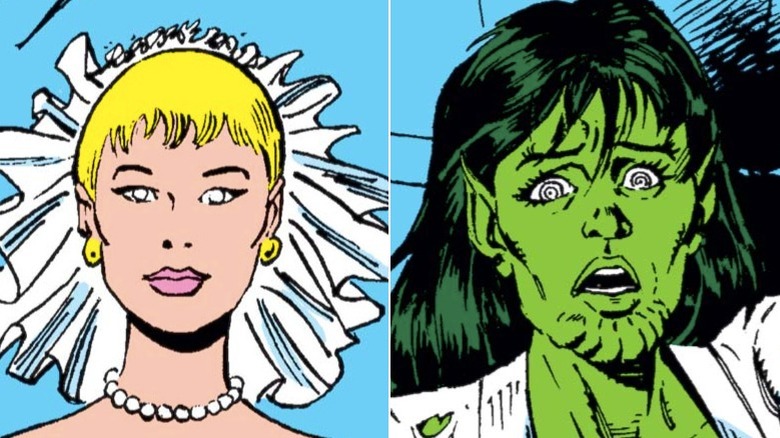The Biggest Red Herrings In Marvel Comics
Things aren't always what they appear to be in the Marvel Universe. Many heroes wear masks, and illusionists like Mysterio, Mastermind, and Fantomex run rampant, making reality a matter of perspective. Deaths are also far from final. Do you miss a major (or not-so-major) character who has recently been killed off? Chances are, they'll be back in a few years –- or in some cases, even a few months, complete with an explanation revealing they never actually died in the first place. Plot twists and revelations can be similarly undone, debunked, and subverted. Not into a storyline's current trajectory? Stick around long enough, and it'll be erased faster than you can say "Xorneto."
We call these acts of misdirection red herrings. Whether they're planned, improvised, or created retroactively, they're as plentiful as superheroes themselves in the pages of Marvel Comics. Here are some of the biggest the House of Ideas has ever dreamed up, from the Sentry's phony origin story to the truth about the Winter Soldier.
Sabretooth being Wolverine's father
Many things Wolverine has learned about his past have ended up being red herrings. His father's identity tops the list of falsehoods as especially egregious. When the X-Men guest star in 1977's "Iron Fist" #15, Danny Rand, aka the eponymous Iron Fist, immediately notices the similarities between Wolverine and Sabretooth, the latter having debuted in the prior issue. This observation is far from coincidental: As Sabretooth's co-creator Chris Claremont explained on the Comixfan Forums, he originally planned to reveal that Sabretooth was Wolverine's dad.
Then Larry Hama began writing Wolverine's solo adventures. At first, things seem to be going that route in his run on the series: Sabretooth outright claims he's Logan's father in 1991's "Wolverine" #41. However, this becomes a red herring in "Wolverine" #42, where it's revealed that Sabretooth only thinks he's Logan's dad. A blood test by S.H.I.E.L.D. doctors confirms that Wolverine and Sabretooth are not related, to Logan's great relief. Claremont got to make Sabretooth Logan's father in the 2009 "X-Men Forever" series, however, which takes place in a separate continuity.
The Avengers and Fantastic Four die to stop Onslaught
In a decade full of shocks, twists, and red herrings, 1996's "Onslaught Saga" managed to feature one of the era's most famous acts of misdirection: The apparent death of many major Marvel heroes. In "Onslaught: Marvel Universe" #1, the Fantastic Four, Bruce Banner, and all active Avengers drain the uber-powerful Onslaught, who has become a being of pure energy, by rushing into him and disappearing. This weakens his "body" enough for the X-Men to finish him off. Even Doctor Doom takes part, but not by choice — he's tackled into Onslaught by Iron Man.
With that, the Marvel Universe's A-list heroes appear to take their final bow, leaving behind less trusted figures like the X-Men, Spider-Man, and the Hulk, who Onslaught split from his human alter ego. It is eventually revealed, however, that those who gave their lives to stop Onslaught have actually been rescued by Franklin Richards, who transports them all to a miniature universe where he "reboots" them. From 1996 to 1997, said heroes starred in the "Heroes Reborn" line of titles, going on new adventures with no memory of their past lives in the mainstream Marvel Universe ... until Franklin, Spider-Man, and the Hulk wind up there themselves. They promptly bring everyone home, save Doctor Doom and Thor, who get there in more roundabout ways.
Jean Grey's death in the Dark Phoenix Saga
Bringing back characters who've been killed off is a frequent occurrence in Marvel Comics. Still, some returns are higher profile than others, with Jean Grey's first "resurrection" being among the most famous. How does Marvel bring her back, you ask? By turning her death at the end of "The Dark Phoenix Saga" — one of the most acclaimed X-Men stories of all time — into a red herring. As it turns out, the Jean Grey who sacrifices her life in 1980's "X-Men" #137 is actually the Phoenix Force. 1986's "Fantastic Four" #286 reveals the cosmic entity placed Jean in a special cocoon following 1976's "X-Men" #100, then impersonated her for nearly 40 "X-Men" issues.
It's worth noting that the Jean Grey who stars in "X-Men" #100-137 was not originally meant to be an impostor. As writer Kurt Busiek recounted to GoCollect, this retcon came about when he pitched it as a way of bringing Jean Grey back that would absolve her of her greatest sin: The mass murder of an entire planet's people. Since that's the one condition then-editor-in-chief Jim Shooter had for bringing Jean back, the idea passed muster. When Marvel decided to reunite the five original X-Men in the first "X-Factor" series, it became canon.
The death of Captain America
Captain America is one of the most iconic Avengers around, not to mention one of the most famous superheroes period. Killing him off seems unthinkable ... or at least, it did until 2007's "Captain America" #25. In this issue, Steve Rogers gets shot by two weapons: A sniper rifle fired by Crossbones, and a handgun wielded by a mystery shooter. His death changes the Marvel Universe forever.
It doesn't take long, however, for this series to reveal that a whole lot of red herrings are present in Captain America's supposed death scene. One involves the identity of the mystery shooter: Agent 13, aka Sharon Carter, who's been manipulated by Doctor Faustus. The biggest red herring of all, however, is Steve's "death." 2009's "Captain America: Reborn" series reveals that Steve became adrift in time upon being shot, due to the unique nature of the gun Sharon used. A wild time travel adventure ensues, from which Steve eventually returns home.
Peter Parker being a clone
You'd think being killed off and cremated in a smokestack would be a pretty definitive ending for a Spider-Man clone. Yet when the Spider-Man writers of the 1990s "felt hamstrung" (via Newsarama) by Peter's all-too-adult concerns regarding his mortgage and marriage, they came up with a novel solution: Send in the clone.
The result became one of the biggest and most infamous red herrings in Spider-Man history. Peter encounters his clone from the 1970s, who's renamed himself Ben Reilly, in 1994's "Spectacular Spider-Man" #216. At first, Ben's certain he's the clone, and adopts his own superhero identity, the Scarlet Spider. Yet a growing mountain of evidence eventually leads both web-slingers to the opposite conclusion in "Spectacular Spider-Man" #226: Ben is the original Spider-Man, and Peter Parker is the copy. Peter eventually chooses to hang up his webs and embrace normal living with MJ, allowing Ben to take over as Spider-Man.
And that's how the "Clone Saga" should have ended, as originally conceived. But the story's popularity extended it from a single story arc into, well, a saga. It grew to such unwieldy proportions that the whole thing is eventually revealed to be a massive hoax, perpetrated by the long-thought-dead Norman Osborn, the original Green Goblin, in 1996's "Amazing Spider-Man" #412. Thus, the clone reveal is reversed, and Peter Parker becomes Spider-Man once more.
The two major deaths of Magneto
The character known as Xorn is a bundle of red herrings unto himself. It all begins when Magneto is attacked by a giant Sentinel fist in 2001's "New X-Men" #115. The very next issue reveals that Magneto (along with millions of other mutants) has died in a Sentinel attack on Genosha. This seems to be further corroborated in "New X-Men" #132 when a handful of X-Men discover what appears to be a recording of Magneto's last words to his doomed island nation.
Yet this all turns out to be a carefully orchestrated series of red herrings designed to trick the world into believing Magneto is dead. As the "truth" of his demise sinks in, Magneto befriends the X-Men under the guise of Xorn, a mutant whose face is obscured by a helmet. He reveals himself in "New X-Men" #146, and proceeds to defeat the X-Men and take over New York City. His reign of terror ends when Wolverine beheads him in "New X-Men" #150.
That death, however, turns out to be a red herring too. When Magneto reappears in the first two issues of 2004's "Excalibur," he explains that the person who Wolverine killed was an impostor. Subsequent retcons reveal that Xorn is, in fact, a real person, who comes to reside on the mutant island Krakoa in 2019's "House of X" #1.
Bucky dying in World War II
It's amazing to think that one of the most popular characters in the MCU used to be considered one of the few characters in comics who could never be brought back to life — or at least, not permanently. But indeed, that was the case when it came to James Buchanan Barnes, aka Bucky. The reasoning was that Cap's guilt over not being able to save his friend during World War II had become a defining trait, to the point that bringing Barnes back risked weakening Steve Rogers' characterization.
Yet 2005's "Captain America" reveals that Bucky Barnes is still active in the present day as the mysterious Winter Soldier. He's already murdered Jack Monroe, several of the Red Skull's lackeys, and the Skull himself by the time Captain America and Sharon Carter learn his identity. Shortly thereafter, it's revealed that while Barnes did technically die in the plane explosion, his body was preserved enough by the icy water of the English Channel that he could be revived by Russian soldiers and brainwashed into serving as an elite assassin for decades. Luckily, Cap manages to restore his old friend's memories with the Cosmic Cube in "Captain America" #14, making Barnes a hero once more.
Gambit being the X-traitor
While chasing Trevor Fitzroy in the future, Lucas Bishop finds the X-Mansion's underground levels in 1992's "Uncanny X-Men" #287. He also discovers a decades-old recording of Jean Grey claiming a traitor attacked the X-Men, and that "Professor Xavier — was the first to die." Desperate for answers, Bishop goes to see his old employer, LeBeau. An elderly man, many call him "the Witness," as he's the last person to have seen the X-Men alive. Yet the Witness is uncooperative.
When Bishop travels to the present, he meets Gambit, who he begins suspecting is a younger version of the Witness. Believing he's put two and two together, Bishop accuses Gambit of betraying the team in the future. While he's talked down by his teammates, he warns Gambit he'll be keeping him under close watch.
Despite Gambit and the Witness' similarities (including sharing the name "LeBeau"), Bishop is ultimately proven wrong. 1996's "Onslaught X-Men" reveals that the video of Jean Bishop saw in the future had degraded to the point that key dialogue was missing, including lines revealing that Xavier wasn't killed by the X-Traitor, but betrayed the X-Men himself as Onslaught. Furthermore, 2001's "Gambit and Bishop" portrays the Witness as Gambit's mentor, while Bishop himself becomes an X-Traitor, nearly killing Xavier at the end of the "Messiah Complex" storyline.
Killing off Speedball
In 2005, then-editor-in-chief Joe Quesada declared Marvel was going to kill off fan-favorite character Robbie Baldwin, aka Speedball. This isn't too surprising, as Quesada had announced his disdain for the character a few columns earlier, but online comics fandom was rocked, regardless. While Quesada did offer Speedball a way out by asking fans to suggest who Marvel should kill off instead (with Thor being, shockingly, the number one contender), he continued teasing the character's demise until the release of 2006's "Civil War" #1. Here, Speedball and his fellow New Warriors are apparently killed off by the villain Nitro, along with several residents of Stamford.
Though most of the New Warriors present do die, Speedball is discovered to have survived in the 2006 series "Civil War: Front Line." Baldwin, seemingly powerless after the explosion, gains new abilities after being shot point-blank. Now able to absorb and redirect kinetic energy in ways that don't involve bubbles, Baldwin creates a new superhero identity for himself: Penance. This gritty reboot comes complete with a new costume, whose inside is lined with spikes — one for each Stamford casualty. Funnily enough, Quesada did tease such a revamp shortly after claiming he hated the character, but this detail was overshadowed by his alleged plans to kill him. In Quesada's own words, "I really love the character, there were never any intentions to kill him, only elevate him, but it sure made stuff fun around here didn't it?"
The Sentry's 1961 origin
Shortly before his 2000 debut, the Sentry was promoted in "Wizard" #105 as a recently unearthed '60s creation of Stan Lee and artist Artie Rosen, whose passing was announced two issues earlier. In keeping with this theme, the character is portrayed in his first miniseries, 2000's "The Sentry," as a long-lost hero, who wipes all memory of his existence to avoid unleashing his monstrous alter ego, the Void. With only one other comic allegedly to his name — 1961's "Startling Stories" #1 — "The Sentry" seemed like a great second chance for this obscure, Superman-ish character. There's just one catch: Almost nothing "Wizard" said about the character's creation is true.
Not only is the Sentry not a Stan Lee creation, Artie Rosen never existed. Moreover, Marvel never published a 1961 "Startling Stories" issue featuring the Sentry. It was all a massive red herring, put together by Marvel Comics and "Wizard" to drum up interest in the character, whose true creators are Paul Jenkins, Rick Veitch, and Jae Lee. Even Stan Lee was in on it, as was legendary comics artist John Romita Sr., who drew the Sentry concept art featured in "Wizard" #105. The ruse's mastermind? Marvel's then-editor-in-chief Joe Quesada, who got the red herring rolling a year earlier by sending well-wishes to the supposedly-ill Rosen in the letters page of "Daredevil" #9.
Captain America, HYDRA agent
It's amazing how a red herring that technically lasts one issue can have an enormous impact. Then again, given that it's Captain America, it's not surprising this particular false revelation got so much traction. In 2016's "Captain America: Steve Rogers" #1, Steve Rogers stuns readers by fatally wounding Jack Flag and declaring his allegiance to super-terrorist group HYDRA. This jaw-dropping red herring is explained in the next issue, where the Red Skull clarifies that Steve's defection has been caused by Kobik, a living Cosmic Cube who mistakenly thinks altering reality to make Cap a HYDRA agent is an improvement. Regardless, the "Steve Rogers, agent of HYDRA" twist inspired plenty of criticism from fans (per Vulture). Cap seemingly remains a HYDRA agent for a while after these initial issues, until 2017's "Secret Empire" sees Kobik recreate the heroic Steve Rogers from memory to stop the corrupted version.
The Human Torch marries Alicia Masters
Traditionally, sculptor Alicia Masters dates Benjamin J. Grimm, aka the ever-lovin', rock-skinned Thing of the Fantastic Four. But when Grimm decides to stay on the planet Battleworld at the end of 1985's "Secret Wars" series, Alicia accepts Ben's choice. She soon finds love again with the Human Torch, aka Johnny Storm. But Alicia and the Thing don't quite break up before Ben heads to Battleworld (although the subject does come up). This new relationship leaves the Thing fairly distraught when he returns to Earth — especially after Johnny and Alicia decide to get married.
But this marriage isn't meant to last. "Alicia" turns out to be a red herring — or rather, a green one. She's really a Skrull named Lyja, chosen to spy on the Fantastic Four on behalf of her empire. But while "Alicia" is phony, Lyja's love for Johnny is genuine. Ultimately, she sacrifices her life to save his while the Fantastic Four rescue the real Alicia from Lyja's fellow Skrulls in 1991's "Fantastic Four" #358. Happily, Lyja's "death" also ends up being a red herring, and she's since reappeared on a number of occasions.
